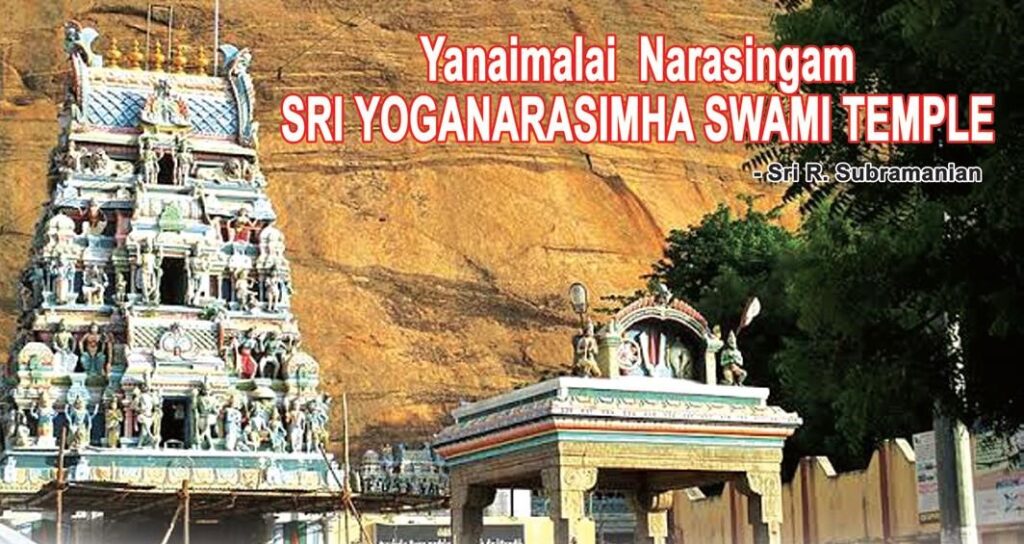Sri Yoga Narasimha Swamy Temple On the Vimana Pradakshana path, in the northeast direction, there is a west-facing Yoga Narasimha Swamy temple. It has Mukha Mandapam (pillared entrance) Antharalamu (middle space) and Garbha Alayam (Sanctum Sanctorum). In the Sanctum Sanctorum, there is a three-foot-high platform. On that platform west facing idol of Yoga Narasimha is Read More
Tag: Yoga Narasimha Swamy
YanaiMalai Narasingam Sri Yoga Narasimha Swamy Temple
Narasingam Sri Yoga Narasimha Swamy Temple To put an end to the atrocities of evildoers and to defend His true devotees Lord Mahavishnu took as many as 24 avatars of which the most popular are the ten avatars called Dasavatara. In almost all Vishnu temples we can have dharshan of Dasavataras in a separate sannidhi. Read More

